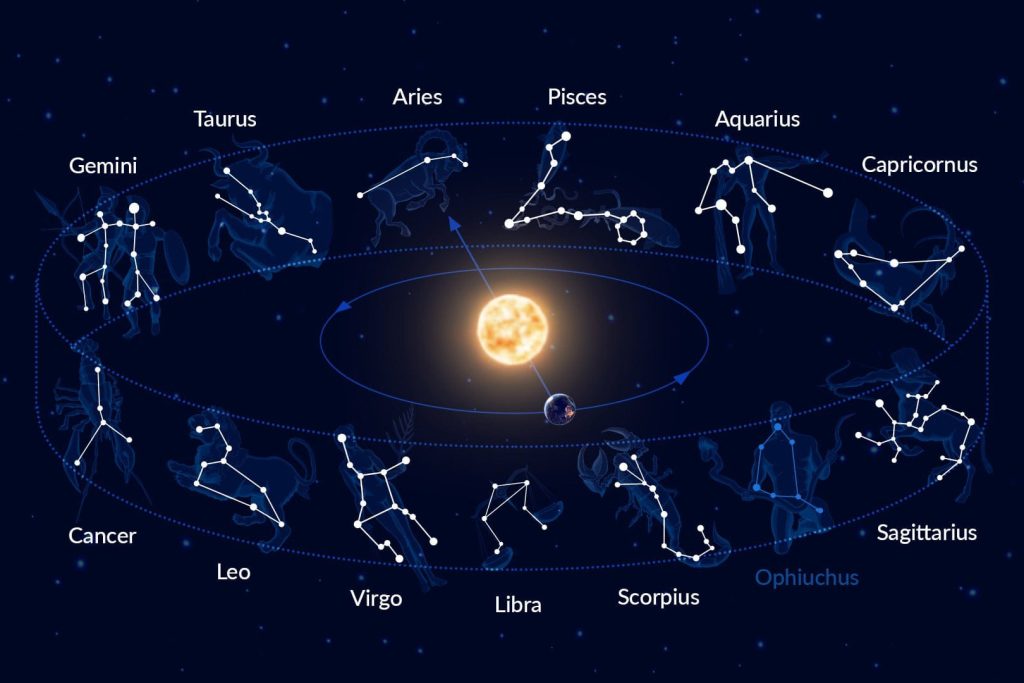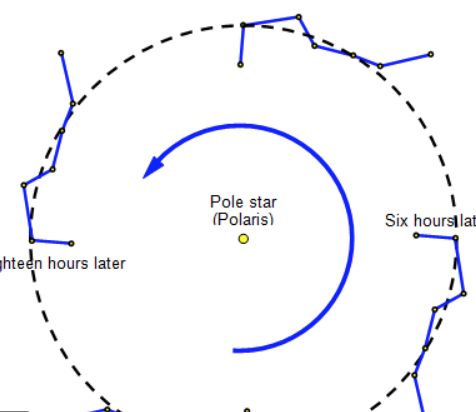The constellations visible in the year can be classified in different ways (ordered by Declination, Right Ascension, alphabetical, etc.), however, they can also simply be ordered according to more basic criteria, such as when they are visible during the year, and if they are located or not on the ecliptic, as will be seen below:
Zodiacs: The ancient Greeks called those constellations located in the ecliptic “zodiacals.” Zodiac means “circle of animals”. The zodiacal constellations are visible at different times of the year. It is worth mentioning that, contrary to popular belief (mainly fueled by pseudosciences such as astrology), there are not twelve zodiacal constellations, but thirteen.

Ophiuchus, located between Scorpio and Sagittarius, should be considered (the ecliptic covers a larger area of Ophiuchus than of Scorpio, in practice); On the other hand, depending on the interpretation, Cetus could also be included, since although the ecliptic does not pass within its limits, it is very close (less than 1/4 of a degree), which is why some planets, asteroids, the Moon and even part of the Sun transit very briefly within the limits of this constellation.
Circumpolar: They are those that, when observed from a certain terrestrial latitude, never “come out” or “set” on the horizon, due to their proximity to one of the celestial poles. Therefore they are visible throughout the year. It is worth mentioning, as was just said, that the constellations that are seen circumpolar from a certain location (e.g. 23° S) will not be the same from other latitudes (e.g. 54° S), since in each case the celestial vault will look different, with the celestial pole located higher or lower relative to the horizon, restricting (or expanding) the number of zodiac constellations available.

For example, if one were located at the geographic North (or South) pole, all the constellations would appear circumpolar, since the apparent motion of the stars would be around a point located at the zenith (at the respective pole of the Earth). projected in the sky).
Rest of constellations: All those constellations that become more visible during a certain time of the year, as the Earth moves around the Sun. They are therefore visible at certain times of the year ("seasonal"). Basically, they are all those constellations that are not circumpolar from our geographical location (including the zodiacal ones), which in many cases will be visible to observers in both hemispheres, particularly those located on the celestial equator.


